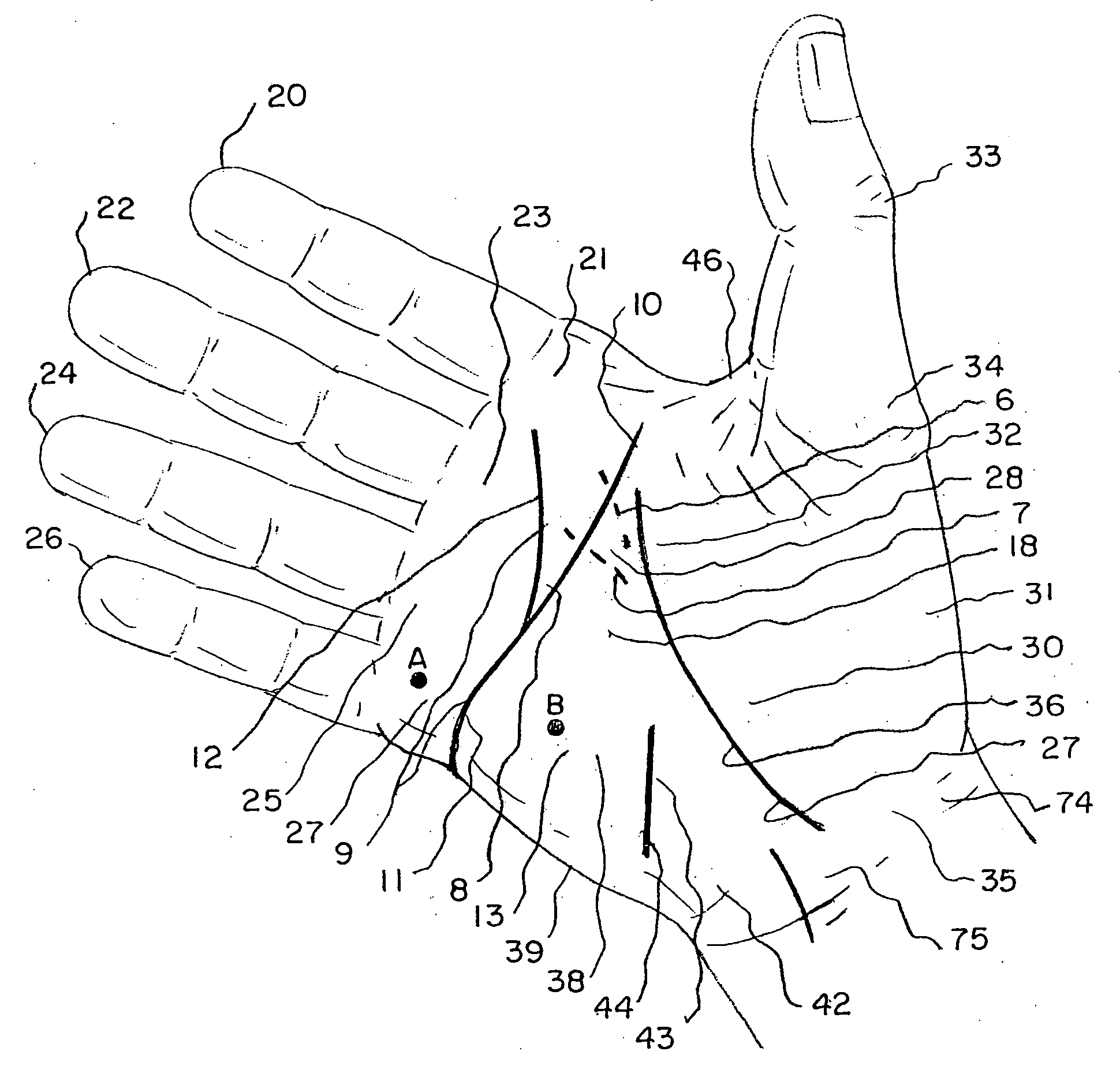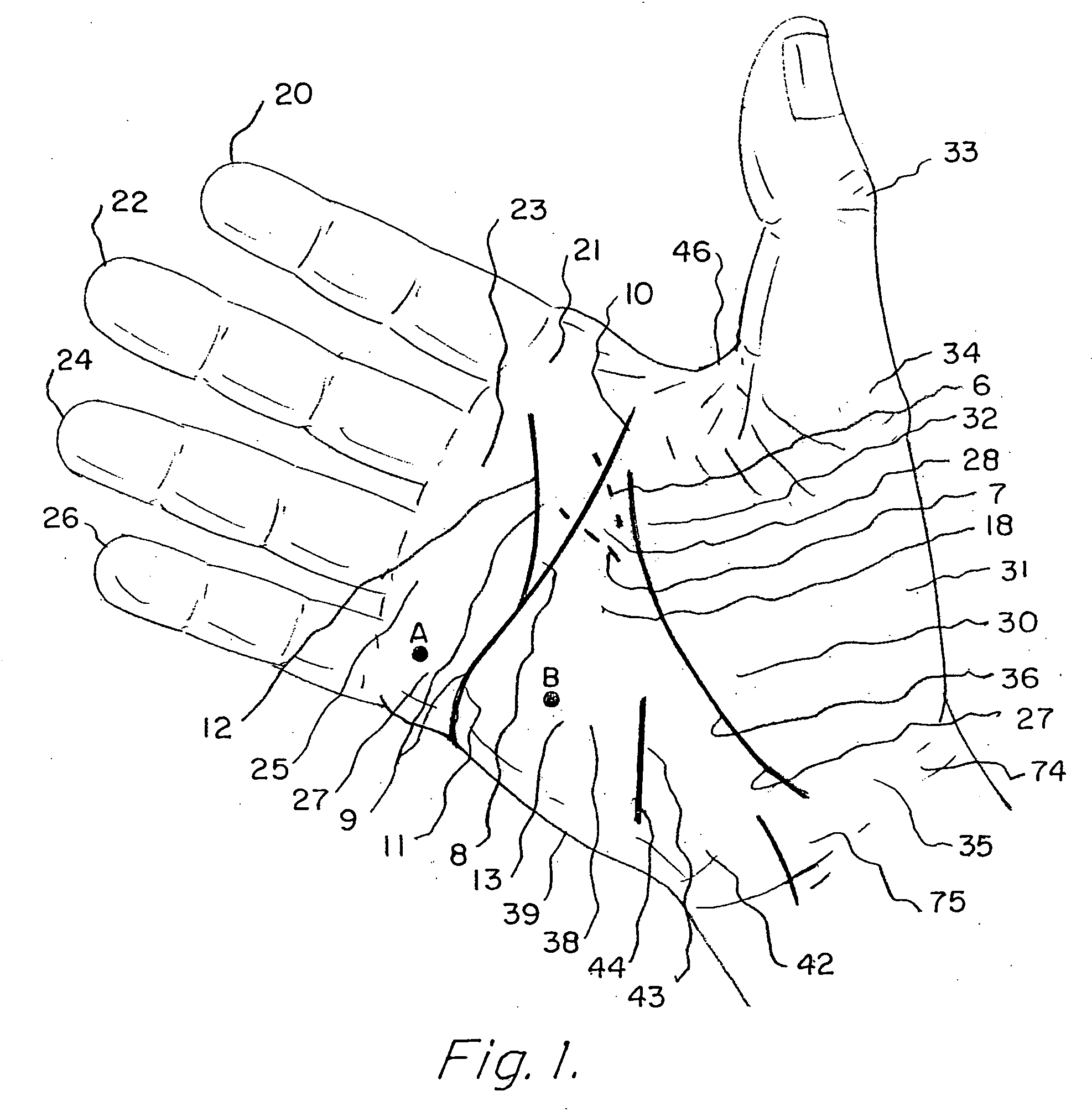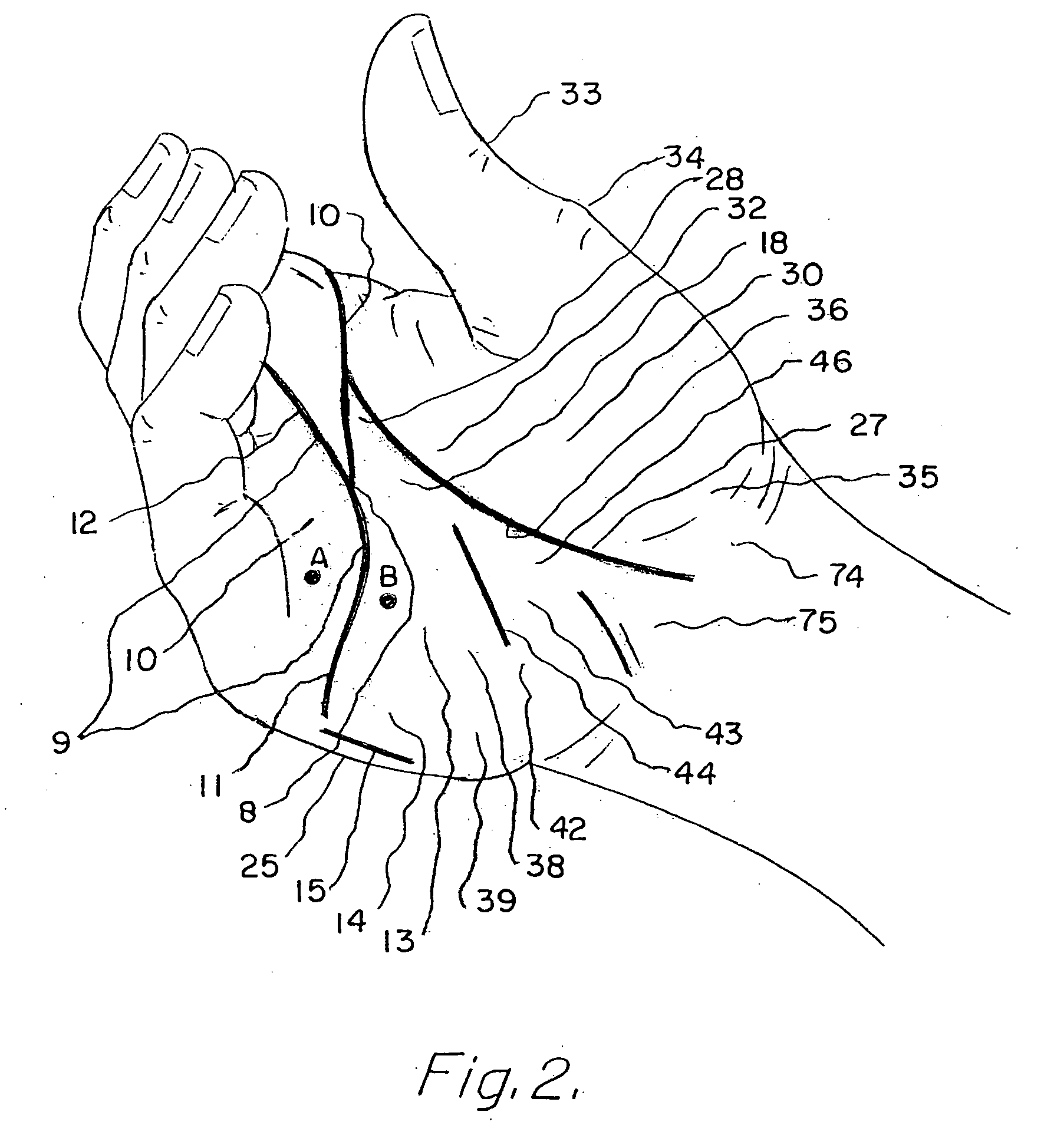Hand accessory
a technology for hand accessories and hand muscles, applied in the field of hand accessories, can solve the problems of increased stress on the upper hand, increased weight of the padding, and increased stress on the weaker upper hand, and achieve the effects of avoiding stress or impingement avoiding stress or impinging on the thumb muscle, and reducing the weight of the hand
- Summary
- Abstract
- Description
- Claims
- Application Information
AI Technical Summary
Benefits of technology
Problems solved by technology
Method used
Image
Examples
embodiment 400
[0048]There is an area within the hand which acts as a fault line, allowing portions on either side to move in opposite directions (like a loose hinge). In embodiment 400 the line was referred to as a transverse crease running from the inside of the little finger knuckle 27 upward to the top of the hand. This area is important in understanding the gripping motion and will be further named and analyzed as follows: Lower transverse crease 11 extends from the inside of little finger knuckle 27 at the bottom of the hand to ring finger hollow 8, thence becoming outer transverse crease 12 branching (as a “Y”) to intersect middle finger 22 and index finger 20. That area acts like a fault line, being the greatest area of movement or “shifting” during phase two of the grip. The portion extending from ring finger hollow 8 upward to the inside of index finger knuckle 21 bordering upper web 46 being upper transverse crease 10. The “fault line” area, the line extending from the base of lower tra...
embodiment 500b
[0057]Embodiment 500B seen in FIGS. 5 & 6 describes by comparison, a much wider and encompassing thumb harness 554 extending to somewhat overlap thumb buffer 548 during certain phases of the grip, (FIG. 6), then angles outwardly to junction 530 such that the inner hand space 5 of 500A is now reduced to upper space 2 and lower space 3.
[0058]The phase two relocation channel 570 of 500B is deepened further, not only by the extension of handle wedge 505, but by bridge 540 and primary contact area 506 arcing further externally and downwardly creating handle space 512 below the hand's lower tough ball and also conforming with little knuckle phase two position.
[0059]Thus, 500B upper hand grip 520 and lower hand grip 510 are similar to embodiment 500A, however the two anchors are joined by a thin, narrow swivel 515 of basically no length, swivel 515 being the uppermost portion of junction 530. The upper and outermost portion of junction 530 presses into ring finger hollow 8 as ring finger f...
embodiment 500c (figs.7-8)
[0070]Embodiment 500C (FIGS. 7-8) is the same as embodiment 500B, with a separation below outer web anchor 518 just above thumb spread 526, which becomes an extended thumb spread 526 functioning as a combined thumb spread 526 and lower web relocation press 519. The upper portion of lower web relocation press 519 combined with deflector 509 and outer web anchor 518 is free to lift externally and outward of index tendon 6 providing more space for the hand's upper web moving downwardly as the thumb moves forward especially during phase three and four, embodiment 500C providing added flexibility and comfort eliminating stress at the thumb muscle and third joint, and leading to embodiment 500D, wherein outer web anchor 518 is separate from thumb spread 526 and deflector 509, deflector 509 and thumb harness 554 becoming more as one body (see following.
[0071]Embodiment 500D (FIGS. 4&9-14A) consists of two structures, lower hand grip 510 in the lower hand, and upper hand grip 520 in the upp...
PUM
 Login to View More
Login to View More Abstract
Description
Claims
Application Information
 Login to View More
Login to View More - R&D
- Intellectual Property
- Life Sciences
- Materials
- Tech Scout
- Unparalleled Data Quality
- Higher Quality Content
- 60% Fewer Hallucinations
Browse by: Latest US Patents, China's latest patents, Technical Efficacy Thesaurus, Application Domain, Technology Topic, Popular Technical Reports.
© 2025 PatSnap. All rights reserved.Legal|Privacy policy|Modern Slavery Act Transparency Statement|Sitemap|About US| Contact US: help@patsnap.com



